Images - (3)
Many people feel that Judaism is lacking in images of God -- ways to imagine the divine. When we open a traditional prayer book we quickly find God called King, Father, Lord; other metaphors or images are rarer. Lacking a wider range of images can impoverish our feelings and ideas about the divine, and leave us with very limited access to the fullness of reality in all its holiness. There is a particular sense of lack especially of images incorporating the body and the natural world. Various teachers today are working to fill this lack; recent contributions include Marcia Falk's Book of Blessings and the Reconstructionist prayerbook, Kol HaNeshamah.
In our traditional literature, the Zohar is the richest collection of images and stories of God. The Midrash is filled with wonderful images and stories, many of which the Zohar includes or adapts. Often, though, images that are folkloric in the Midrash have become mythic in the Zohar. For example, the compassionate gazelle in the Midrash is an animal such as we meet in fairy tales, but in the Zohar she is Malkhut, the divine presence (see "The Gazelle of the Dawn" in this course). In general, a key to almost any passage of the Zohar is to know that all the images and stories are about God.
The following is a list of just a few (seventy) of the Zohar's images of God. I have deliberately not grouped them according to the Kabbalistic system of Sefirot, but mixed them up because they are all images of the divine.
God is all. God is an angel. God is an apple orchard. God is a beggar. God is the beginning. God is a breastfeeding mother. God is breath. God is concealed and totally unknown. God is clouds. God is crowns. God is the days of Creation. God is death. God is desire. God is an eagle. God is the earth. God is eyes. God is faces. God is fear. God is purple silk. God is fire. God is a flowing gushing stream. God is the Garden of Eden. God is gateways. God is a gazelle. God is holiday guests. God is the Holidays. God is Jerusalem. God is a lion. God is love. God is matzah. God is a menorah. God is mirrors. God is the moon. God is a mountain of darkness. God is the name of God. God is night. God is Noah's ark. God is North, South, East, West. God is nothing. God is a nursing child. God is olive oil. God is the oldest of the old. God is a palace. God is peace. God is prayer. God is a rainbow. God is rivers of balsam. God is a rose. God is a sealed secret. God is shadow. God is a shofar. God is a silkworm. God is silk. God is silver. God is skies. God is a snake. God is Song. God is the soul of the soul. God is sparks. God is the sun. God is a tent. God is time. God is the Torah. God is a tower that flies in the air. God is the Tree of Life. God is voices. God is wine. God is wind. God is Who? God is Words.
PLURALITY AND UNITY
One way to understand the system of Sefirot is as an attempt to map the variety of ways in which we experience God. For example, we may feel the presence of God in nature, or in Torah study; at times God may feel very close and at others, hidden and distant. We can look at the array of images in the Zohar in a similar way: each image relates to a different way of perceiving the divine reality. Joseph Campbell titled a book on mythological images "The Masks of God". One person can wear many masks, and one God can be experienced or perceived in many different ways.
The Zohar means more than this, however. The Sefirot are not called God's masks, but they are called God's faces. A mask is not part of the real person, but a face is. A person can wear many masks -- and many facial expressions -- but has only one face. God has more. More than that, God's faces look at each other and sometimes kiss each other or quarrel with each other. If this metaphor feels strange, it is because when we think about God in human images we tend to think of one person. But the Zohar often imagines God as a whole family.
The Zohar shares this vision of plurality in God with other Kabbalistic works. However, in many other Kabbalistic writings the Sefirot are like the parts of a machine. They have different functions, and interact in different ways, but it's all one structure that works automatically and predictably. It is possible that, from a theoretical perspective, the Zohar shares this point of view. However, in its imagistic and storytelling approach to talking about God, there is a feeling of freedom and unpredictability about how the Sefirot act and how they interact with each other.
Many rabbis and teachers, including Kabbalists, have found this imagery of the Sefirot as separate, interacting beings to be uncomfortably close to the Christian idea of the Trinity, or to polytheism. Indeed the Zohar purposely challenges the assumptions of monotheism -- see, in this course, the passage "Hear, O Israel".
The fact that the Zohar differs from conventional monotheism need not lead us to reject it out of hand, however. There is no word in pre-modern Hebrew for "monotheism". Instead, religious works spoke about the "yichud" of God. "Yichud" can mean "unity" but it can also mean "union" -- a coming together.
Religion becomes hard to sustain when it is divorced from experience. For many of us, our experience of the presence of God in our lives includes plurality. One sign of this is the recent popularity of books, TV shows and meditation practices about angels. It can be easier to relate to a variety of angels than to one God. Some courageous thinkers have addressed this religious issue. Jewish-American poet Allen Ginsberg wrote: "Why, in the name of All that's holy, must God be one?" A Canadian teacher of students for Christian ministry writes:
At a recent conference on biblical studies and theology I tried to introduce into current "god-talk" the polytheism option... One way of reading the postmodern scene is in terms of the failure of myths of singleness... it seems high time to listen to the wisdom of polytheism.(David Jobling, 1 Samuel, pp. 297 - 298.
Collegeville, Minnesota: Liturgical Press, 1998.)The Zohar is not a polytheistic work, but it does envision God as plural as well as singular. In so doing it may be truer to experience, and possibly just truer, than other theologies which insist on simple, unchanging oneness.
EVIL
The Zohar is true to experience in its understanding of evil, too. To many religious thinkers, evil is only an illusion, or only a lack of good, with no power of its own. God is always good and always present to us. The devil or Satan is nonexistent, a metaphor, or at most a servant of God, as in the Bible. The authors of the Zohar understood life very differently. They experienced evil as real and powerful. Their Satan is not a mere servant of God, but a threatening, powerful counterforce. They sensed that evil originates in God, and expressed this radically; see, in this course, "Jacob and Esau". Also, there is a split, a gap, in the divine, between the Sefirot of Tif'eret and Malkhut, and there are times where we experience that gap as an absence of God. One of my teachers was once lighting Shabbat candles by the window of her apartment, on a high floor of a building. She looked up from blessing the candles, looked out over the city, and saw a city empty of God. It was a vision of the split, the absence. The Zohar's vision of the reality of evil and divine absence is not true to everyone's experience and it may be too depressing to be spiritually useful for many of us. Still, in our times, in a world of emotional bleakness in many people's inner lives and devastation outside, it is compelling.
CHRISTIAN IDEAS
Some of these ideas and images may sound "Christian". Many of us tend to respond to unfamiliar religious ideas with the reflex thought that they must be Christian, not Jewish. Unfortunately, our spiritual identity as North American Jews is often so tenuous that it comes down to a stubborn insistence on not being Christian. One of the results of this is that Jewish theological discourse becomes impoverished because we are so afraid of sounding Christian.
The authors of the Zohar were far from friendly to Christianity. Yet, in Christian Spain, they were surrounded by Christian imagery and ideas. Charles Mopsik has pointed out that the Catholic Church in Spain in the 1200s was missionizing to Jews as never before. Jews were compelled by government authority to listen, in the synagogues, to sermons by Christian friars who were experts both in theology and in persuasive speaking. These efforts were not wasted; there were Jews who converted to Catholicism. The majority who remained Jewish were still exposed to high-level Christian religious thought perhaps more than any Jews before them. The Zohar's response, according to Mopsik's analysis, was not to shut out Christian influences but, on the contrary, to take them in, rework and re-imagine them, and create a theology deeply rooted in Jewish sources but incorporating whatever they found compelling in Christianity. Of course this task was made easier by the fact that many Christian ideas were rooted in Jewish sources to begin with. Jews who accepted the Zohar would not be seduced away from Judaism by Christian theology because they would find the richest aspects of that theology avaialable to them in Jewish form and in a way that reinforced -- as the Zohar constantly does -- traditional Jewish life and learning.
Today, at a time of unprecedented friendship between Jews and Christians and our communities, I believe we could benefit from this kind of theological cross-fertilization much more than from fearfully fleeing anything that sounds "un-Jewish".
THE SELF AND THE OTHER
The Zohar itself, however, does manifest intense hostility to the non-Jewish world. This is the moment to sound a warning: the Zohar is compelling, and it is easy to come away from studying it with a feeling that everything in it is true. Please do not be drawn into believing everything it teaches!
One way that the Zohar envisions the world is in concentric circles. At the centre is the pure holiness of God, which is all love. The further we get from the centre, the more ambiguous things become. The harsh qualities of power and judgment become stronger and stronger. Furthest outside is the evil demonic realm. Sometimes there is a sense that all of this is really part of one picture and even all divine; more often there is a sense of tension and conflict between one layer and another.
As a picture of the impersonal spiritual realm, this has no more problems than any other attempt to schematize the multifaceted reality of life. Things become uglier when the Zohar correlates different kinds of people with different positions in this picture, by implication or explicitly. At the centre are the authors of the Zohar themselves, and presumably other Jewish male Kabbalists. Further outside are Jewish men who are observant but not involved in Kabbalah; further yet, those who neglect observance. Jewish women are even further outside; like their divine archetype, Malkhut, they overlap the border between the holy and the demonic. Finally, non-Jews are in the demonic realm.
This is an ugly picture of reality and a false one. Please don't be drawn into such a view through the Zohar or through other texts or teachers with similar views!
It is worth thinking about this picture further. The Zohar's hatred for non-Jews, which goes well beyond traditional ideas of Jewish chosenness, is not hard to understand. It is a reaction to persecutions and pressures from the non-Jewish world, and the counterpart of medieval anti-Jewish prejudice in which many Christians saw Jews as animalistic and demonic. Similar conditions have provoked bloody revolts in other times and places, as the oppressed sought revenge. The authors of the Zohar took their revenge only in words and ideas.
Today, though, such ideas must be rejected. Already early in the twentieth century, one of the great Orthodox mystics, Rav Kook, chief rabbi of the Jewish settlements in the Land of Israel, denounced in the strongest terms the attitude that sees goodness and holiness only within the Jewish people. Today in the twenty-first century, in a time of friendship and free exchanges of ideas between Jews and others, we know from experience that there is no difference in essence between Jews and other people, and our religious thinking has to take this into account.
Kabbalistic elitism, in which the Kabbalists see themselves as essentially superior to other Jews, is not as consistent in the Zohar as the demonization of non-Jews. For example, the Zohar teaches that poor people in general manifest the presence of Malkhut and are worthy of devoted attention. Kabbalistic elitism is also less likely to be a dangerous temptation for us non-Kabbalists. However, it highlights the core problem of the Zohar's outlook, and what we can learn from it.
For most of us, it is easy and natural to feel that the universe is revolving around us, that life is a story with us as the hero and everything else in a supporting role. Although the authors of the Zohar were exceptionally daring in facing reality, in this respect they did not get beyond what comes easily. In their picture of reality they were at the centre and those who were peripheral to them were at the periphery. We can learn from their mistake.
Their mistake would not have occurred, however, had they not been exceptionally grounded in their own experience. For too many of us, religious or spiritual life is a matter of taking in teachings from the outside -- doing things others tell us to do, believing things others tell us to believe. By contrast, the authors of the Zohar wanted to know reality, and they sought reality through their own lives, their own learning and experience, their own selves. Their mistake was in failing to correct adequately for the self's skewed sense of where the centre of the universe is. Yet, if we do try to make that correction, their approach to reality can be a deep and challenging model for us.
FEMALE AND MALE
We live in interesting times for thinking about gender; some communities fiercely uphold defined, limited roles for men and women, while in other circles growing acceptance of gays and lesbians, bisexuals, trans-gendered people, and those born intersexual, signals an opening up of all definitions. To some thinkers, gender differences are a key to understanding the world; to others, they are an illusion.
It is easy to study Kabbalah a little, enough to notice that it has a mythology of masculine and feminine, and miss the fact that its assumptions are often the opposite of our own. Here in North America today we typically characterize "the feminine" as being about compassion, gentleness, and the flowing creativity that we association with the right brain; and "the masculine" as about power, control, and the logical thinking we associate with the left brain. The standard Kabbalistic system, reflected in the Zohar, is exactly the opposite. Power, control and logic are feminine qualities; compassion, gentleness and creative flow are masculine. If nothing else, this is a good reminder that ideas about gender are not natural and universal.
As in other areas, the Zohar enjoys undermining its own assumptions. For example, the passage "The Gazelle of the Dawn", included in this course, stresses the compassion of the feminine presence of God -- the opposite of its own standard system. Since it polarizes gender but also undermines that polarization, since it explores male and female and then insists "all is one", the Zohar can be seen as a resource for trans-gender exploration.
The most provocative academic studies of gender in the Zohar have come from Elliot Wolfson, who argues that the mystical experiences which the Zohar celebrates are focused on male sexual energy, on erotic (though presumably non-physical) bonding between male Kabbalists and between them and God, who when all is said and done is male in their eyes; in this context, the role of women is utterly secondary.
I think that Wolfson's studies perhaps overestimate the importance of sexuality as a key to understanding the Zohar, and certainly pay too little attention to the rich and varied imagery of the divine feminine in the Zohar. It is true that there are many statements in the Zohar, drawing on medieval philosophy, asserting that the masculine is higher and the feminine lower, the masculine active and the feminine only receptive, the masculine primary and the feminine secondary. Yet there is a vast range of imagery of the feminine in the Zohar, and much of it is about power, compassion and autonomy. (In this course, see especially the texts "The Wisdom of Solomon" and "The Gazelle of the Dawn".) This imagery simply doesn't fit any sense of masculine primacy, even if that was what the authors believed. Either the authors of the Zohar were not as limited in this area as they sometimes sound, or their imaginations carried them beyond whatever their ideas and outlooks were. Since they chose to write a book of imagery, not ideology, I see no reason for us to hold back from drawing on their imagery, regardless of their ideas.
At the same time, Wolfson's studies point to other ways in which the Zohar can be useful to our explorations. Traditional Jewish sources, while condemning sexual activity between men, celebrate passionate attachment between men who learn together. A liberal Jewish outlook celebrates openly erotic, sexual love between men (and between women) as well. Yet there is pain for gay and lesbian Jews in the hostility or silence toward them in traditional texts. It is important to discover what traditional sources can contribute to a gay-positive Judaism. The Zohar may be an important resource in this area.
If erotic male bonding really is at the centre of the authors' outlook, that is more testimony to how thoroughly they approached reality through their own selves and their own experiences. They were not disconnected from their bodily selves; they saw their bodily and emotional selfhood, as Jewish males, as a path to God. In Wolfson's analysis, they made the mistake, once again, of seeing themselves as the centre of the universe and everything else, women included, as secondary. But if we could avoid that mistake, how inspiring and challenging their model is, of seeking the divine through who we are, physically, emotionally and in every other way.Labels: Zohar
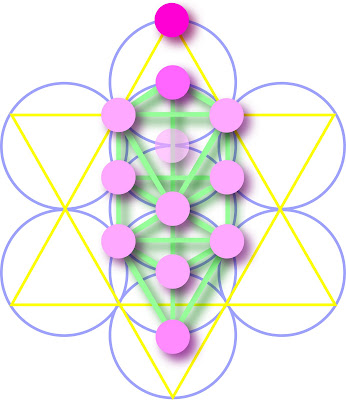
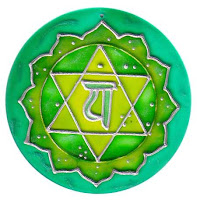

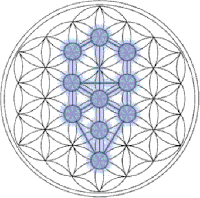

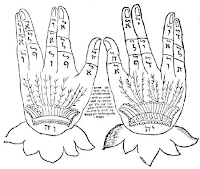

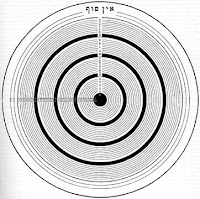
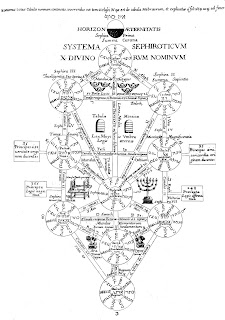
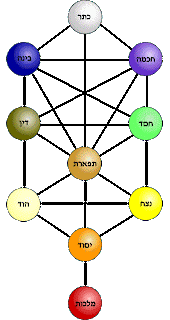
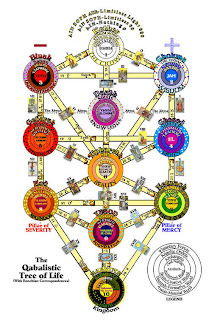


0 Comments:
Post a Comment
Subscribe to Post Comments [Atom]
<< Home